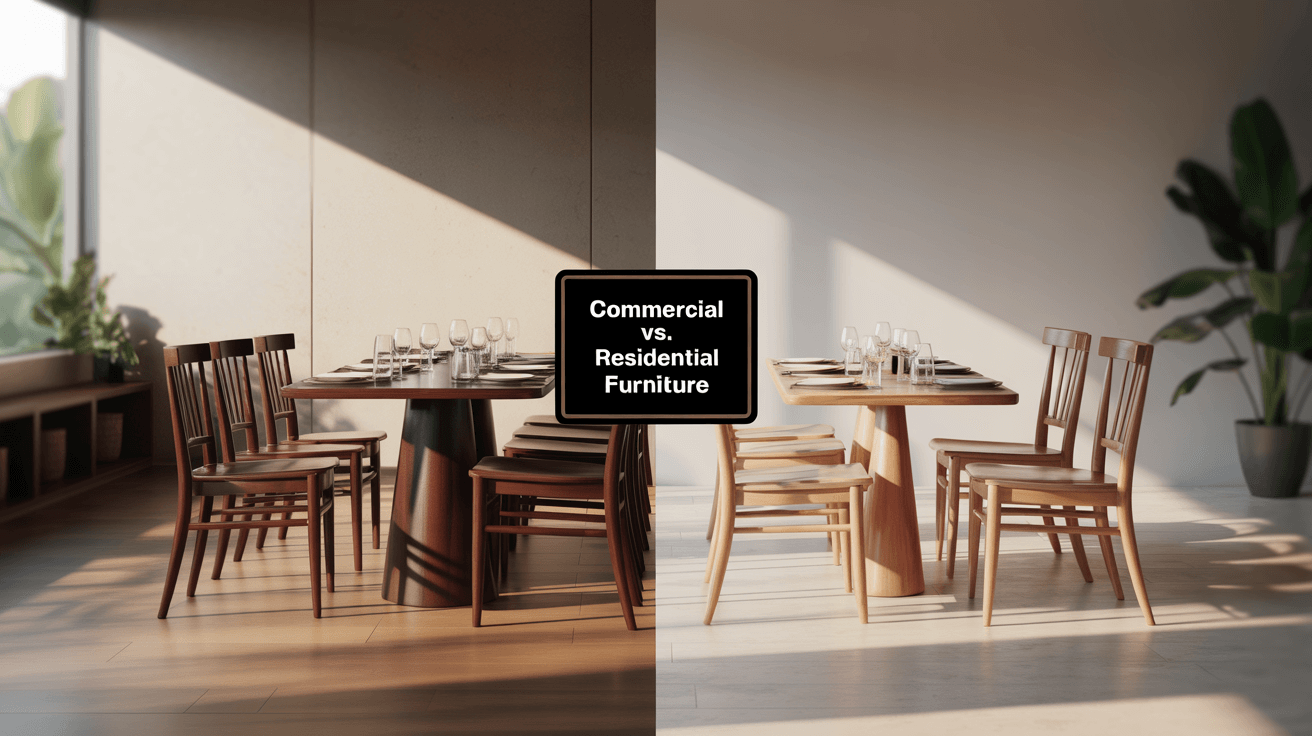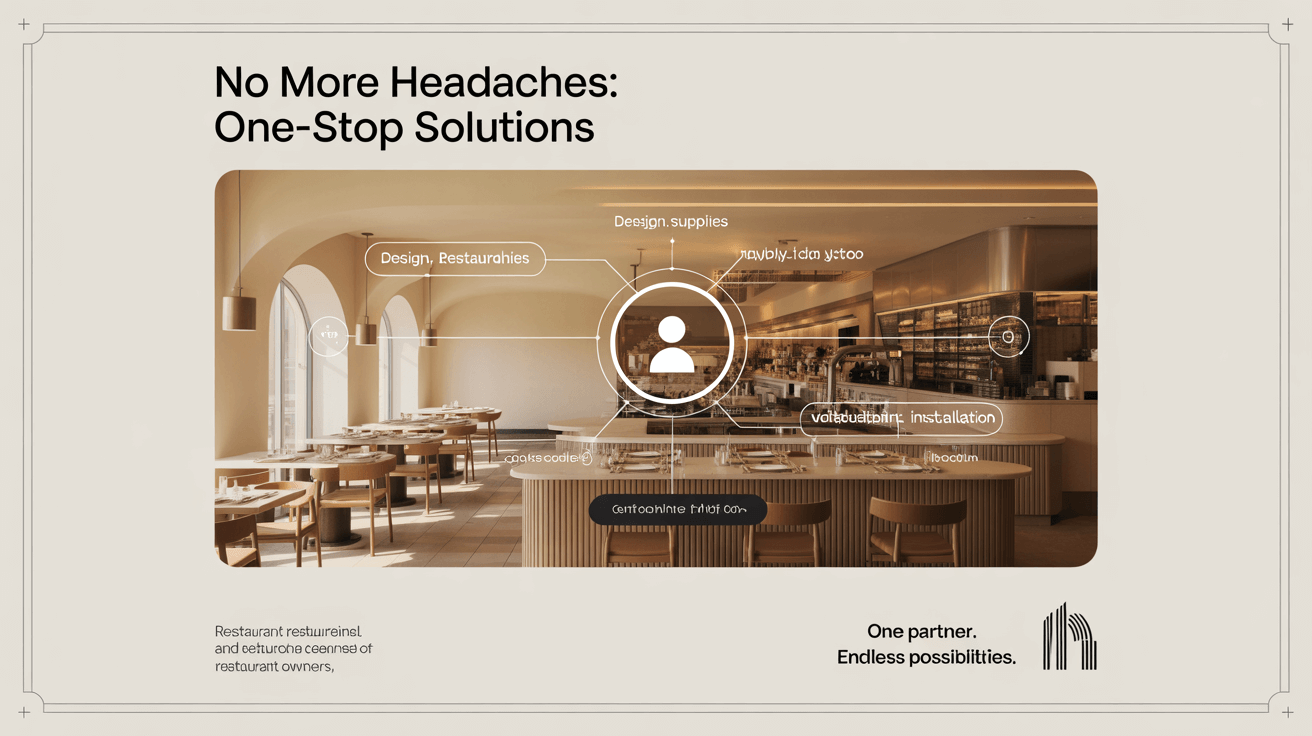Commercial vs. Residential Furniture: Why Restaurant Furniture Matters explains key differences and shows why purpose-built pieces drive durability and guest satisfaction. But here’s the kicker… swapping residential for commercial can cost you big time.
1. What defines commercial furniture?
● Heavy-duty frames rated for 24/7 use
● Fire-retardant upholstery meeting NFPA 701
● Industrial-grade components for spill resistance
● Warranty terms covering high turnover
Ready for the good part? true commercial specs slash replacement cycles.
| Feature | Commercial Standard | Benefit |
|---|---|---|
| Frame Rating | BIFMA-certified | 500K+ cycles |
| Upholstery Fire Code | NFPA 701 | Code compliance |
2. How does residential differ?
● Designed for light home use only
● Limited warranty, often 1 year
● Softer foam with lower ILD ratings
● Aesthetic focus over hard-wearing function
What’s the real story? residential pieces can fail in months, not years.
3. Why choose commercial for restaurants?
● Withstands spills, stains, and heavy traffic
● Supports consistent 12–16 hour daily service
● Meets safety and sanitary regulations
● Delivers predictable maintenance costs
This is where it gets interesting… commercial builds protect both brand and budget.
4. What risks come with residential furniture?
● Premature sagging and structural failure
● Voided insurance or code violations
● Higher long-term replacement expenses
● Guest dissatisfaction due to instability
But here’s the kicker… hidden costs far outweigh initial savings.
| Risk Factor | Consequence | Cost Impact |
|---|---|---|
| Frame Wear | Breakage | 2× replacement cost |
| Non-Fire-Rated Cover | Code fines | $1K+ per infraction |
5. How do materials differ?
● Commercial uses kiln-dried hardwoods and steel
● Residential opts for softwoods or MDF cores
● Higher-grade foams versus economy blends
● Marine-grade sealants in commercial versus basic varnish
Ready for the good part? material upgrades mean years, not months, of service.
6. What upholstery standards apply?
● Commercial fabrics rated ≥50K double rubs
● Anti-microbial, stain-resistant treatments
● UV-stable options for outdoor patios
● Flame-retardant backings and foams
What’s the real story? higher ratings cut deep-clean cycles by 30%.
7. How do warranties compare?
● Commercial warranties span 3–5 years
● Residential typically 1 year or less
● Coverage includes labor and parts
● Service agreements for preventive maintenance
This is where it gets interesting… extended warranties reduce downtime.
| Warranty Type | Commercial Length | Residential Length |
|---|---|---|
| Frame | 3–5 years | 1 year |
| Upholstery | 1–2 years | 6 months |
8. How does design impact ROI?
● Commercial designs balance form and function
● Residential styles may need frequent replacement
● Brand-aligned finishes drive repeat visits
● Lifecycle costing favors commercial builds
But here’s the kicker… design choices influence both costs and customer loyalty.
9. What maintenance differences exist?
● Commercial cleaning protocols with approved products
● Hardware inspections scheduled quarterly
● Easy-swap parts for quick fixes
● Residential often lacks service support
Ready for the good part? proactive maintenance extends ROI by 40%.
10. How do certifications matter?
● BIFMA ensures durability and safety
● GREENGUARD confirms low emissions
● ISO 14001 for environmental management
● UL-listed components for electrical safety
This is where it gets interesting… certifications safeguard your investment.
| Certification | Focus | Restaurant Benefit |
|---|---|---|
| BIFMA | Durability tests | Extended lifespan |
| GREENGUARD | Emissions | Healthier air |
11. How does seating comfort vary?
● Commercial seats use ILD 30–35 foam for support
● Residential foam ILD often below 20
● Ergonomic shaping for long-stay guests
● Anti-slip upholstery keeping cushions in place
What’s the real story? comfort boosts average check by 15%.
12. Why is safety non-negotiable?
● Commercial frames designed to prevent tipping
● Fire-rated foams and covers mandatory
● Rounded edges and secure anchoring
● Slip-resistant bases for chairs and stools
But here’s the kicker… safety features protect guests and insurers.
13. How does cost per seat add up?
● Commercial upfront 20–30% higher
● Residential replacement every 1–2 years
● Lifecycle cost per seat 40% lower for commercial
● Predictable budgeting with commercial plans
Ready for the good part? lifecycle view reveals true savings.
14. When to mix commercial and residential?
● Use residential for private lounge areas only
● Reserve high-traffic zones for commercial
● Blend aesthetics but maintain codes
● Phase residential pieces out as traffic grows
This is where it gets interesting… smart mixing can optimize budgets.
15. How to evaluate suppliers?
● Check commercial portfolio and case studies
● Verify certification documents
● Review after-sales support offerings
● Compare total lifecycle costing proposals
What’s the real story? supplier vetting ensures performance and peace of mind.
Conclusion
Choosing commercial-grade furniture over residential ensures longevity, safety, and brand consistency in your restaurant. Invest wisely to boost guest comfort, meet regulations, and maximize ROI.
FAQ
Q1: Can I use residential chairs in low-traffic areas?
Yes—limit residential pieces to private lounges or offices.
Q2: How often to replace residential vs. commercial?
Residential every 1–2 years; commercial every 5–7 years.
Q3: Are BIFMA certifications essential?
Absolutely—they guarantee durability and safety.
Q4: Does commercial upholstery cost more to clean?
No—commercial fabrics often repel stains, easing maintenance.
Q5: How to budget for commercial upgrades?
Phase purchases over seasons and leverage vendor financing.






